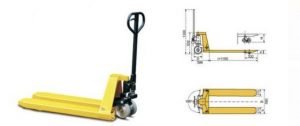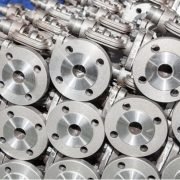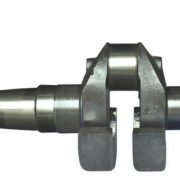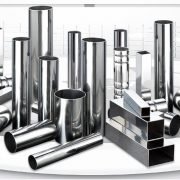Diagnosis Method of Hydraulic System Failure of Forklift
The hydraulic system is the core of the manual hydraulic forklift. In that way, if there is a malfunction in daily use, how should we check and diagnose it. Today, I will introduce you to three basic methods.
1. Visual inspection method
For some relatively simple faults, we can inspect parts by means of sight, hand model, ear hearing and smell.
For example, visual inspection can find faults such as cracks, oil leakage, loosening and deformation. In order that parts can be repaired or replaced in time. Holding oil pipes (especially rubber pipes) by hand, there will be vibration when pressure oil flows through; but there is no such phenomenon when there is no oil flow or the pressure is too low.
In addition, hand touch can also be used to judge whether the lubrication of hydraulic components with mechanical transmission parts is good.
Feel the temperature change of the component housing with your hands. If the component housing is overheat, it means that the lubrication is poor. Ear listening can determine the point of failure and the degree of damage.
For example, hydraulic pump suction, overflow valve opening and component issuance will produce abnormal sounds such as water impact or “water hammer sound”. Some parts will emit peculiar smell due to overheating, poor lubrication and cavitation. We can use nose sniffing in this condition.
2. Replacement diagnosis
We can use this method when there is a lack of diagnostic equipment at the maintenance site, or the components are more precise and not suitable for disassembly. Firstly, remove the component suspected to be malfunctioning.
Secondly, replace it with a new one or another component of the same model that works normally on the machine for testing.
And then the diagnosis can be made by seeing whether the fault can be eliminated. Although this method is restricted by the structure, on-site component storage or disassembly inconvenience and other factors.
Besides, it may be troublesome to operate. However, it is convenient to use this method for components that are small in size and easy to disassemble, such as balance valves, overflow valves, and one-way valves.
The replacement diagnosis method can avoid the performance degradation of hydraulic components due to blind disassembly.
If you do not use this method for the above failures, and directly remove the suspicious main safety valve and disassemble it. Its performance may be affected after re-installation, if there is no problem with it.
3. Instrument inspection method
The instrument inspection method is to judge the fault of the system by measuring the pressure, flow and oil temperature of each part of the hydraulic system.
In general on-site inspections, the failure of the hydraulic system is often manifested as insufficient pressure, which is easy to detect. While the detection of flow is more difficult. The size of the flow can only be roughly judged by the speed of the actuator. Therefore, in-field testing, we can use more methods to detect system pressure.
Yide casting is a leading casting foundry in China, with 27 years’ experience, produces top quantity forklift parts. If you are interested in our casting fitting, please send us a drawing file, and feel free to get a quite quote.











Leave a Reply
Want to join the discussion?Feel free to contribute!